Around 450-year-old Haldarbari Pujo of North Kolkata
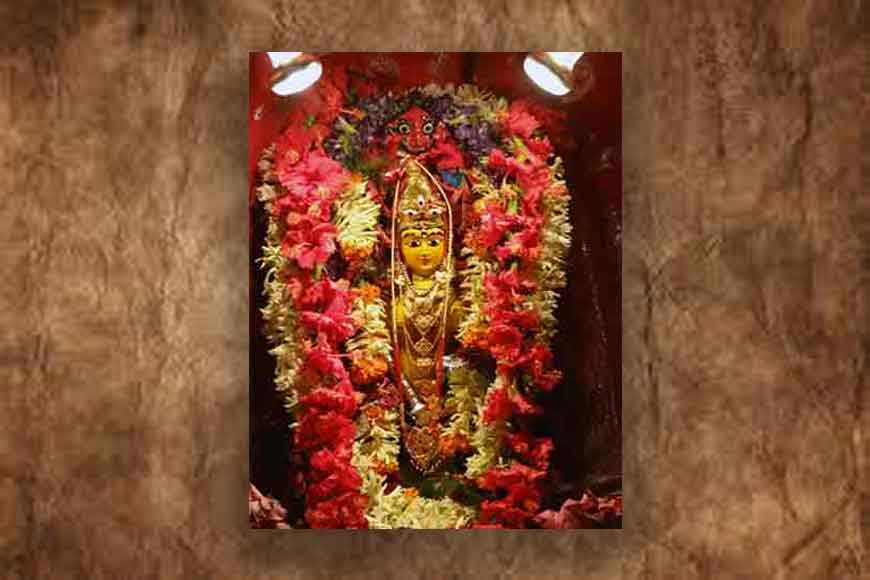
Imagine an idol of Durga being worshipped for almost 450 years! And that too an idol made of Koshthipathor! Well, the Baghbazar Haldar house is one such Bonedi Bari, that celebrates one of the oldest and historically significant Durga Pujas of Kolkata. As Partha Sarathi Mukherjee, well-known city-based physician and an active member of Haldarbari says: “Being an orthodox Brahmin family, norms and rituals are strictly followed even today. And the best part is our family members from all over the world come down to celebrate the Pujo together.” Incidentally, the members of this household have also popularised the Camden Durga Puja in faraway London.
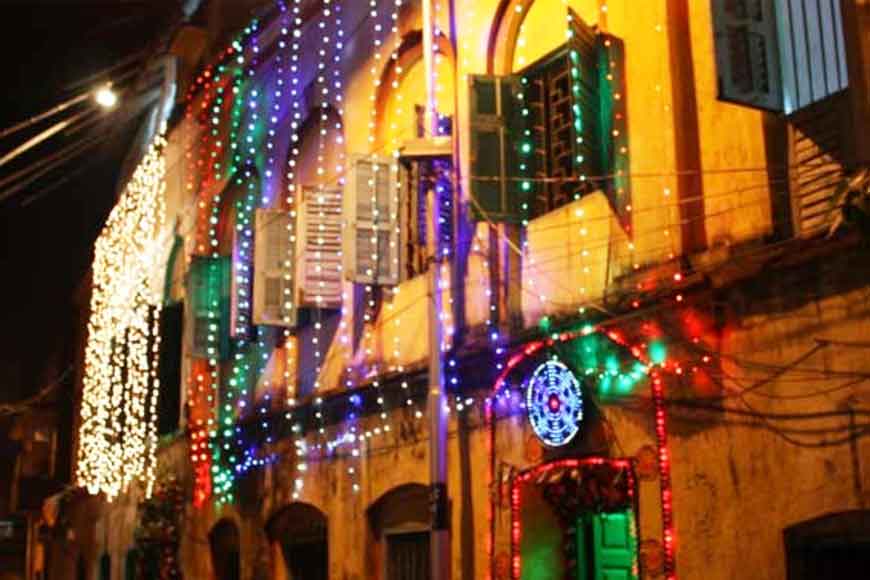 The well lit house during Pujo
The well lit house during Pujo
The Haldarari Puja is presently carried on with great pomp and show under devotee Devasish Haldar, son of Amulyaratan Haldar. There is another parallel house, where few other descendants do another Durga Puja with clay idols. Historical evidences reveal one of the earlier descendants of Haldar family residing at Nawpara of Chandannagar went on a pleasure trip to Sahebpur Palace near Balasore. While staying there, some family members dreamt that a Goddess is instructing them to excavate her idol, buried about 14 feet deep beneath the earth inside the house of a Muslim fisherman. The Goddess also instructed to worship her daily.
The Haldar family excavated the said place as per divine instruction. The idol was that of Devi Durga in the form of Mahishashurmardini. Unlike many such excavated idols, this one was in perfect shape. Even the ring on the deity’s left hand was sculpted intricately. This was the Kasthipathar Durga idol, with a lion as her Bahana, the bejewelled Goddess is seen vanquishing the demon. Above her head is the face of Mahakal, and near her feet are Jaya and Bijoya. The entire idol is seated on a lotus.
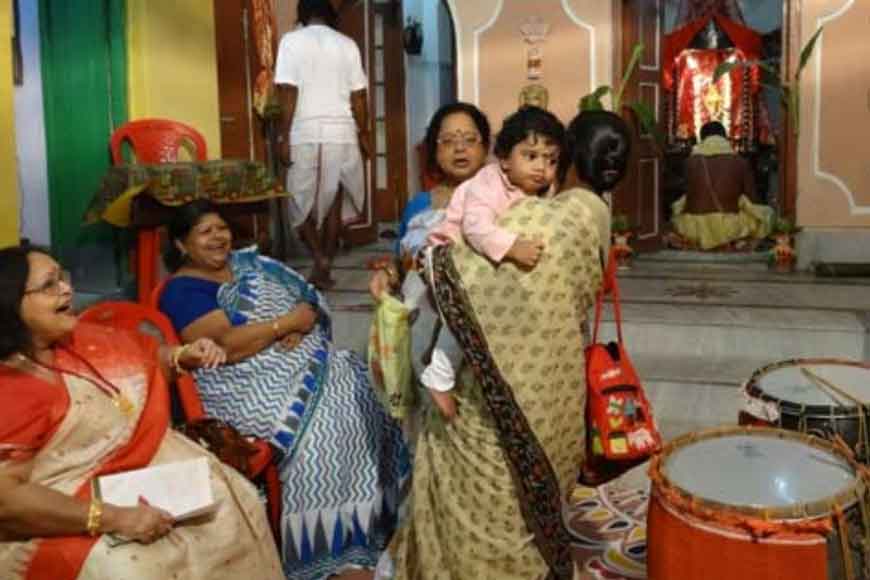 Family gathering during Pujo
Family gathering during Pujo
Haldarbari has its own set of rituals. Bodhan is usually done on Panchami. In the evening, rituals of Amantran and Adhibas of the Goddess are performed. The Dhakis arrives on Panchami itself. On this day the women folk of the house do not observe fasting or eat vegetarian food. They have a fish meal and greet the Goddess with the ritual of Baran chewing beetle leaves. On Maha Saptami, the Nabapatrika rituals aka Kalabou Snan start early in the morning. The procession of taking Nabapatrika towards Mayer Ghat is carried on with two giant embroidered umbrellas, one each of the two Haldar families.
Sandhipuja is a special time at Haldarbari. It is believed this is the time when Goddess Durga slained Mahishasura. She is worshipped during this period as Chamunda - the frightening female form with blood dripping from her tongue. The family has a speciality in arranging of the lamps. At times it is like a conch, sometimes like a lotus or other patterns. Each year’s arrangement is in accordance with the divine intervention received from the Goddess.
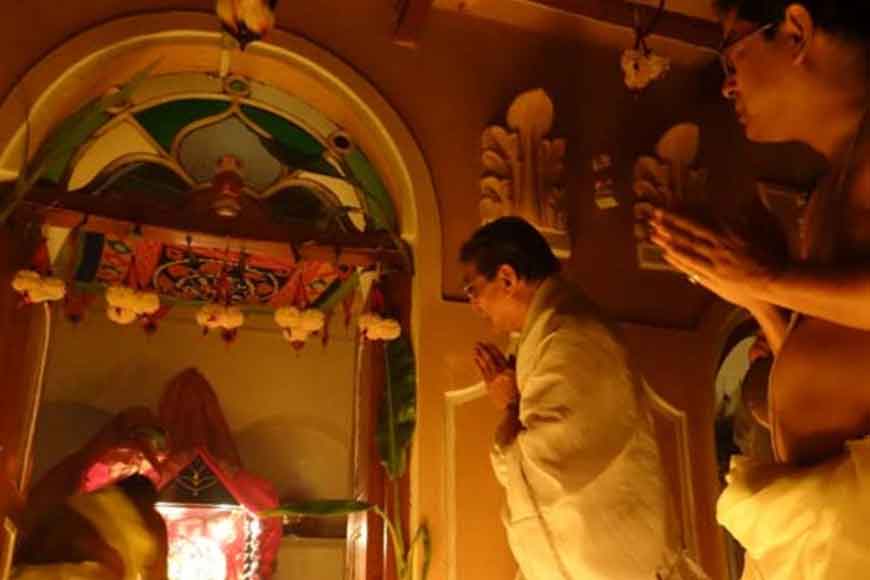 Family members praying during Sandhi pujo
Family members praying during Sandhi pujo
Mahanabami witnesses Kumari Puja after the rituals of Aarti and Hom. Kumari Puja involves the worship of a virgin girl. The Kumari is selected after minutely considering several factors. During Kumari Puja, the chosen girl is bathed with holy water and dressed in a new saree, flowers and jewelleries. Her feet is smeared with Aalta. She fasts from morning till the Puja is over. She is worshipped as the Goddess, while she holds a flower taken from the hands of the deity.
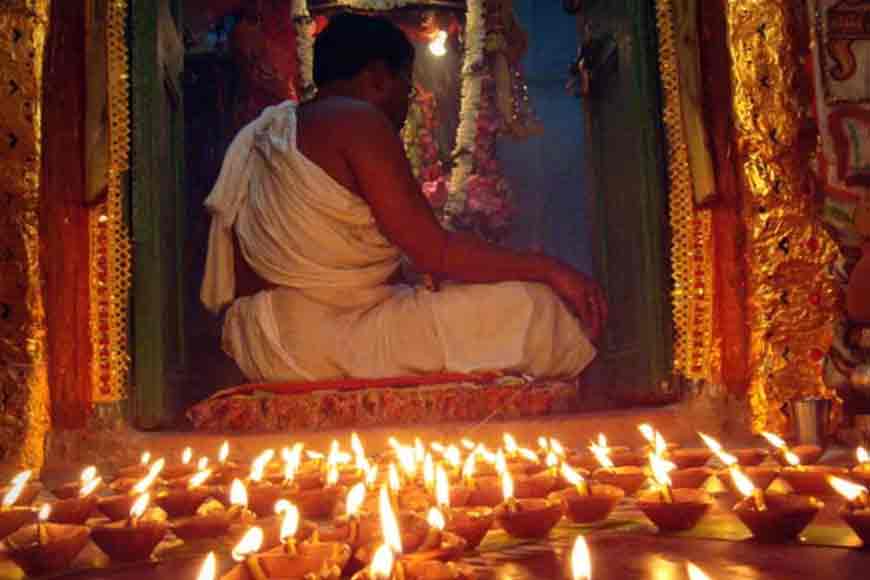 Lamps lit during Sandhi puja
Lamps lit during Sandhi puja
Members of Haldar family are never upset on Dashami, as their idol is a permanent deity and it is not immersed in the Ganges. The only ritual of Biswarjan performed id that of the Ghot (pitcher) of the Goddess in the river. The bhog offered on Sashthi, Saptami, Ashtami and Nabami are different. On Shoshti, ghee-bhaat is offered to the goddess. The ghee-bhat is a kind of pulao prepared with ghee and other vegetables with a tinge of sweetness along with five different kinds fries. On other days, khichudi bhog is offered which is just prepared with dal and rice. No spices are used in it. Out of the 5 different fries used are Makhon-sheem which is mandatory. Luchi, vegetables, chutney, sweets are same for dinner on all the four days. The quantity of the bhog is fixed. It cannot be more than 1 kg 250 gms. Same goes for paayesh as well.










